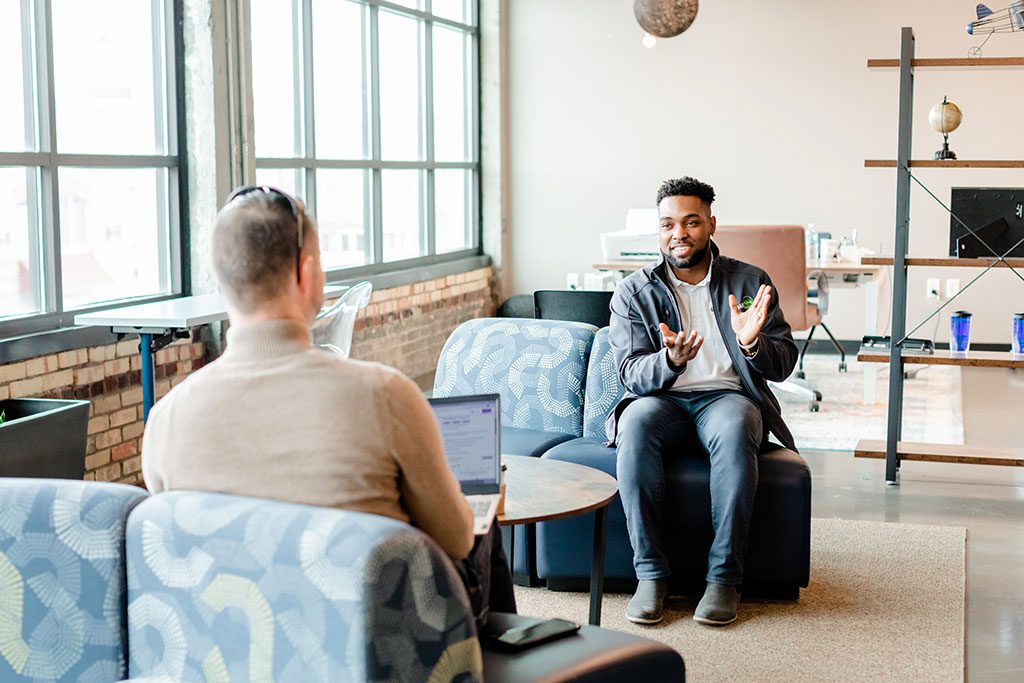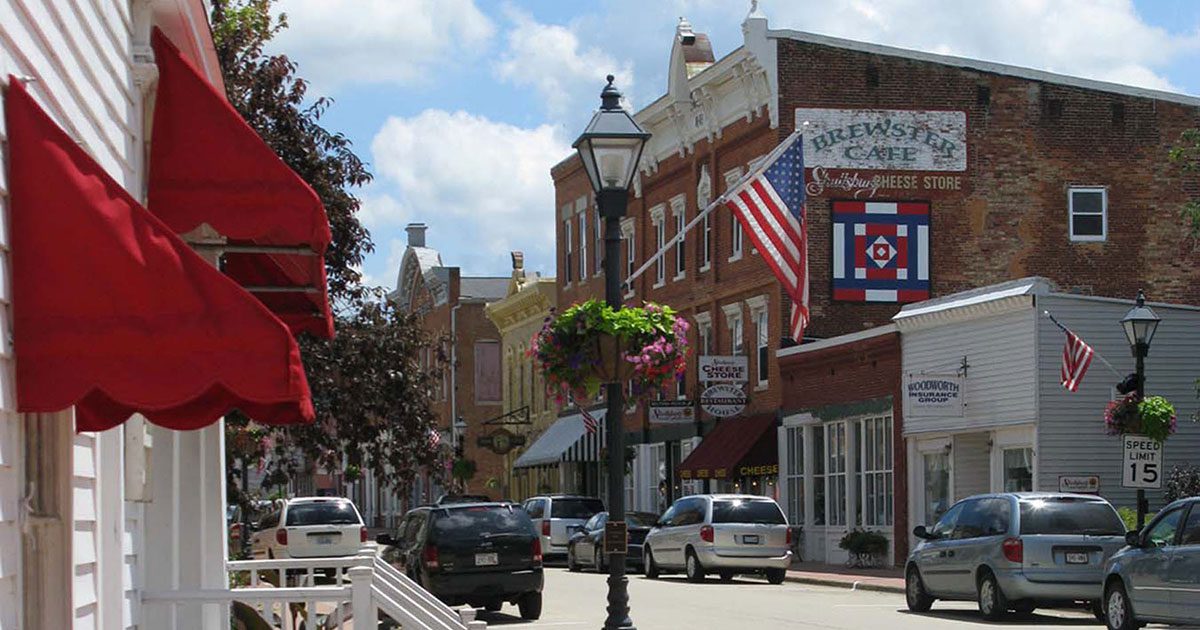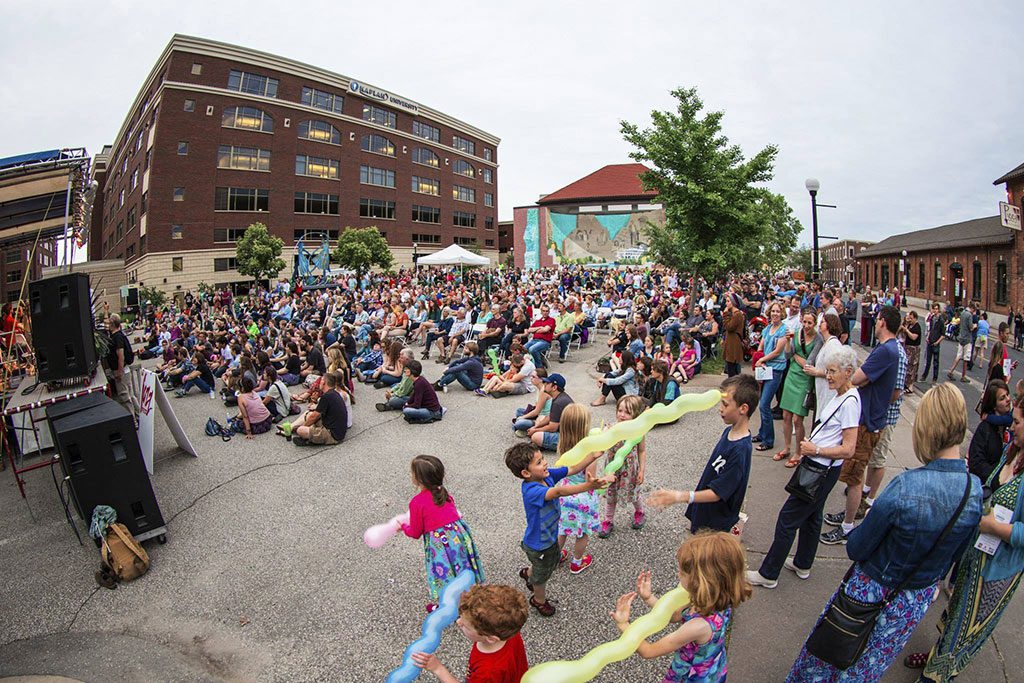
The biggest obstacle to getting people out and about in the winter is the general inertia against leaving the house when it looks so unappealing outside (cold, gray and/or dark). Focusing on the visual experience is critical for attracting and keeping people downtown. The easiest way to do this is through lighting. Twinkle lights in trees, lights in garland over the streets or in alleys, and lit storefronts on stores both open and closed create a welcoming (and warming) ambiance. Edmonton (the capital city of Alberta, Canada) went so far as to add a neon museum wall on the side of an underutilized building to create a 24/7 public art display. Other communities use glowing paint to illuminate sidewalks and bike paths, or other illuminated signposts, benches or planters along major pedestrian corridors to provide wayfinding and illumination alongside streets or paths where storefronts or other major elements are lacking. Skyline lighting is also a popular tactic in communities with unique architectural elements.
To encourage business owners to add lighting, communities might make storefront and architectural lighting an eligible use within their façade or sign grant programs. Ladysmith, Wisconsin, took advantage of post-holiday décor sales to purchase (and solicit donations) of twinkle lights, which were made available for free to any business or property owner who agreed to use them in a storefront and leave them turned on during evening hours. Not only does increased lighting enhance the appeal of downtown, but it also has been shown to benefit individual businesses by causing passersby to notice the change or see the store’s products in a new way. This visibility is essentially free marketing that operates even at times when the store is closed.
In addition to ambiance, lights can contribute directly to a community’s programming through events or unique experiences. Many local event calendars focus on light shows or lighted parades during the holiday season, typically ending after New Year’s Day. Since the bulk of the work is associated with installation of these items, leaving them lit a few months longer (perhaps changing the colors of LED displays) can leverage previous efforts to create a festive ambiance for a longer period of time. As new infrastructure is added, new lighting technology creates unique opportunities to customize lighting. Color-changing LED lights are now being incorporated on numerous bridges and public buildings to create an ever-changing and appealing display. Eau Claire has even made its new bridge lighting an interactive experience by allowing businesses and residents to apply to choose a light color for the day.
This blog post contains more recommendations for creating transformative lighting displays.






